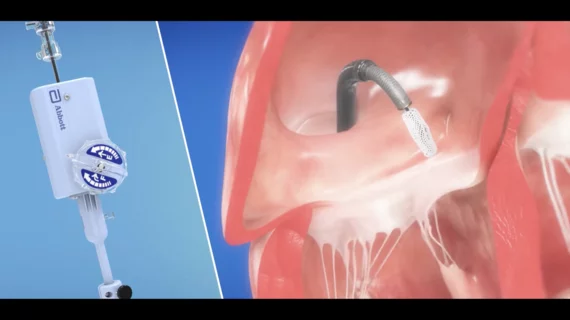EuroPCR 2023: Late-breaking research examines the latest in TEER, TAVR and PCI outcomes
Interventional cardiologists, cardiac surgeons and other specialists from all over the world are gathered in Paris for EuroPCR 2023, the annual meeting of the European Association of Percutaneous Cardiovascular Interventions.
This is just some of the late-breaking data presented so far during the four-day event:
Abbott examines real-world TEER outcomes
Abbott presented new late-breaking research supporting the benefits of transcatheter edge-to-edge repair (TEER) with its TriClip system in patients with tricuspid regurgitation (TR). The study focused on real-world outcomes among more than 500 patients from 26 different sites in Europe.
Overall, researchers reported that the TriClip system was linked to a reduction in TR grade to moderate or less for 77% of patients. In addition, 79% of individuals achieved New York Heart Association Functional Class 1 or Class 2, and 56% of patients reported a significant improvement according to self-administered Kansas City Cardiomyopathy Questionnaire scores.
As far as safety outcomes are concerned, the TriClip system was linked to a major adverse event rate—a composite outcome that included cardiovascular death, heart attack, stroke, new-onset kidney failure or device-related surgery—of 2.5%.
“TriClip has already helped thousands of people in Europe since its introduction in 2020,” Michael Dale, senior vice president of Abbott’s structural heart business, said in a prepared statement. “As we work to make TriClip accessible to more people around the world, the latest data presented at EuroPCR are further proof that the therapy helps patients who have limited treatment options get back to living fuller, healthier lives.”
The TriClip system, currently approved in Europe and other parts of the world, is still an investigational device in the United States.
Edwards Lifesciences presents new data on improving TAVR outcomes through a standardized approach
Transcatheter aortic valve replacement (TAVR) outcomes can be improved by taking a “minimalist approach” and setting specific goals, according to new registry data shared by Edwards Lifesciences. The company examined the safety and effectiveness of its Edwards Benchmark program—which covers best practices for communication, education, decision-making and clinical procedures—in a late-breaking study presented at EuroPCR.
Researchers tracked data from nearly 2,500 patients who underwent TAVR with a balloon-expandable valve in one of seven European countries. Overall, the Edwards Benchmark program was linked to a 25% reduction in ICU use and a 33% reduction in median hospital lengths of stay, all without significantly impacting 30-day clinical outcomes.
“These data should give implanters confidence that the Benchmark program can help TAVR centers be more efficient without compromising safety,” Larry Wood, corporate vice president and group president of the Edwards TAVR and surgical structural heart division, said in a prepared statement.
The Edwards Benchmark program encourages TAVR facilities to “focus on conscious sedation, recovery outside the ICU and a goal of next-day discharge.” It is currently being followed by more than 300 TAVR programs around the world, including centers in the United States, Europe and Canada.
Philips highlights its Dynamic Coronary Roadmap for PCI procedures
Royal Philips presented late-breaking data focused on its Dynamic Coronary Roadmap software and its ability reduce contrast media volumes during percutaneous coronary intervention (PCI) procedures. The iodine contrast media used to visualize a patient’s coronary arteries during PCI can potentially harm their kidneys, Philips explained, but this new software provides real-time visualization via medical imaging that can help limit the use of contrast media.
Javier Escaned, MD, PhD, head of interventional cardiology at Hospital Clinico San Carlos in Spain, presented data from the DCR4Contrast study, which included 371 PCI patients randomized to either receive usual care or receive treatment that included the Dynamic Coronary Roadmap. Overall, the Philips software was linked to an average reduction in total iodine contrast volume by 28.8%. The number of angiograms needed for each PCI procedure also was reduced by an average of 26.3%.
“Enabling physicians to decrease contrast administration during procedures with tools like DCR could make a significant contribution to both the safety and quality of PCI,” Escaned said in a prepared statement. “This is important at a time when PCI is increasingly used in patients with a complex clinical or anatomical profile.”
“At Philips, we are committed to championing technologies that improve the patient’s experience, improve their safety and expand access to procedures to new patient groups,” added Atul Gupta, MD, chief medical officer for image guided therapy at Philips. “Dynamic Coronary Roadmap helps achieve these goals by structurally reducing the amount of contrast agent required for PCI procedures.”
This represents just the tip of the iceberg when it comes to the research being presented during EuroPCR in Paris. Additional information about the meeting is available here.

